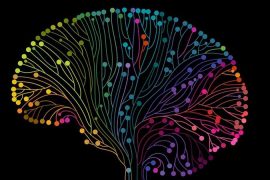Health experts have long been studying the theory behind neuroinflammation in fibromyalgia. This theory is now supported by evidence coming from PET scans, confirming inflammatory mechanisms in the brain of people with fibromyalgia. The study, which was published in the 2019 issue of Brain, Behavior, and Immunity journal, is definitely a major breakthrough in understanding the complex mechanism of fibromyalgia.
Understanding Inflammation
A lot of people often associate inflammation as something bad. When they hear the word inflammation, they immediately link it to something painful, which can be cured by a class of anti-inflammatory medications. However, there is more to inflammation than this. Inflammation is an important part of the healing process and is actually a result of our body’s immune responses. Thus, inflammation somehow helps us to heal fast, which is a good thing.
Understanding Neuroinflammation
When the inflammation becomes chronic, it is when it gets harmful and can trigger various symptoms to appear, including fatigue and pain. The inflammation that takes place in the brain is what is known as the neuroinflammation. This is a topic that medical researchers have been trying to study for years.
The symptoms of neuroinflammation will vary depending on where the neuroinflammation it is taking place. Fatigue, pain, and depression, are some of the symptoms of fibromyalgia, which are believed to be caused by neuroinflammation.
However, the main symptom of neuroinflammation is neurodegeneration. Some of the conditions that were associated with this condition are:
- Alzheimer’s Disease
- Amyotrophic Lateral Sclerosis (ALS)
- Huntington’s Disease
- Multiple Sclerosis
- Schizophrenia
Although inflammation of the brain is a common occurrence in head injuries, it has been found that neuroinflammation is a chronic state and not a response to injuries.

The Role of Glial Cells in Neuroinflammation
Glial cells have been found to play a major role in neuroinflammation. “Glia” is a term that refers to neural glue. These are the tiny cells that make up the white matter of the brain. The glial cells are available in several different forms, and they all have important roles to play in the brain. When activated, the glia can trigger inflammation.
The brain has its own system separate from the rest of the body, due to the blood-brain-barrier (BBB). This helps to prevent things which are circulating within your bloodstream from going into the brain. Such barrier is an important protection. It prevents harmful substances from getting into the brain while allowing certain substances to get in.
Some studies suggest that the root of chronic neuroinflammation may be a compromised BBB which enabled immune cells that came from the rest of the body to enter the brain. Hence, it may have activated the glial cells, which then leads to inflammation.

The Line of Research
The study mention above is a result of a line of research, which started several years ago. It first came out in 2015, which utilized PET scans and MRI to establish neuroinflammation among people suffering from chronic back pain. The researchers have also used a tracer that’s specifically designed to uncover glial activity.
The scans revealed glial activation among the brain regions that specifically corresponds to the lower back. This has verified what researchers were predicting after conducting studies on animals. These studies have been reviewed before they were published in 2017.
The study has also looked into the function of glial activation in sensitization of the central nervous system, which may have also played in the development of fibromyalgia, and several other conditions, including chronic fatigue syndrome. Health experts believe that for patients with fibromyalgia, their bodies are sensitized to pain and some other unpleasant stimuli. Several other studies have also linked the abnormal activation of glial cells to the sensitization of the central nervous system.

In some studies, researchers have theorized that the overactivity of the glial cells may be triggered by severe stress and long-term sleep disturbances, and both of these issues have been linked to fibromyalgia. However, since the studies were done on animals, researchers indicated a need for more human studies before it can be verified.
In 2019, the researchers released a study to determine the presence of glial activation in fibromyalgia. Indeed, they found pieces of evidence, showing microglial activation in several brain regions. Somehow, this makes sense because the pain brought about by fibromyalgia is usually widespread and not just confined to a certain area in the body.
The brain regions believed to be involved are the following:
- Supramarginal gyrus
- Supplementary motor area
- Superior parietal lobule
- Primary somatosensory as well as motor cortices
- Precuneus
- Anterior middle cingulate
- Posterior cingulate cortex
- Dorsomedial prefrontal cortex
- Dorsolateral prefrontal cortex
These are the brain regions that have been found to be not working properly in the previous studies done on fibromyalgia neuroimaging. Researchers have also found a link between the high activity level of these brain regions to severe fatigue.
So far, this was the first study that has looked into the evidence of neuroinflammation in fibromyalgia. Perhaps, treatment for microglial activity can be explored as a possible treatment for the chronic pain condition.



